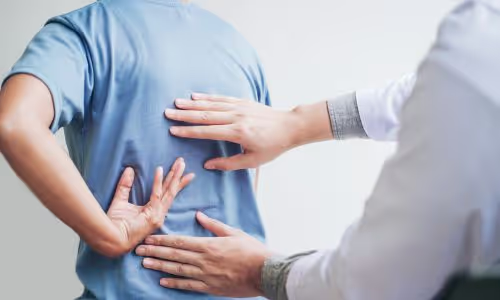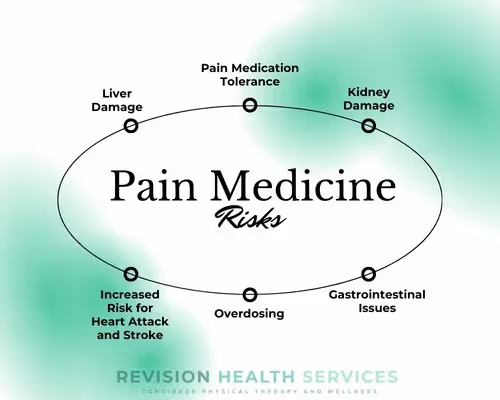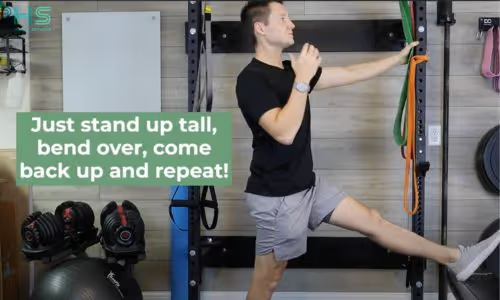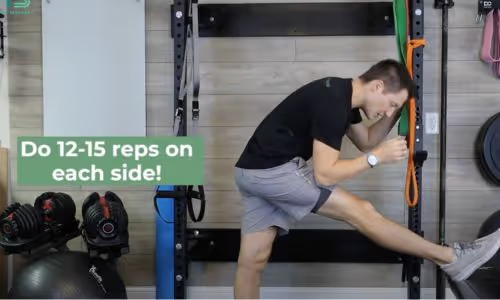
Why is My Back So Stiff in the Morning?
Fatigued or strained muscles, normal age related changes, or awkward sleeping positions are often to blame for a stiff and tight back in the morning. However, there are many things YOU can do to help YOURSELF feel better! Lets dive in.
What Causes my Lower Back Stiffness?
Back tightness or stiffness often occurs due to age related changes in your spine. This includes the facet joints, discs, and other related structures. All of these are completely normal. Tightness or stiffness in your back can occur in your upper and lower back. It is more common to be in your lower back just above your buttocks. When you sleep you are mostly still, which means that your joints that rely on movement for nutrients and lubrication aren’t getting that.
This is completely normal but as a result we can have this feeling of stiffness or tightness in your lower back joints and back muscles. We are built to move and our joints love the nourishment from movement. When I work with individuals with lower back stiffness, I always encourage them to move. If you think about it, we often feel better after moving. This can be as simple as walking or completing mobility exercises.
Exercise and movement improve the facet joints mobilty thus the feeling of stiffness in the lower back. You have a lot of them so that's why your entire back can feel stiff!

As you age this stiffness or tightness in your back can increase as well. The days of jumping out of bed without that stiffness or tightness are not as common as they used to be. The great news is that a simple morning regiment can alleviate lower back stiffness and allow you to start your day feeling so well.
Did you know that up to 33% of your spine length is due to the discs?

That is why we lose some height as we get older. Those discs lose some fluid over time causing a loss in overall height. This loss of disc height is classified as degeneration. Disc degeneration is very normal and nearly 100% of people will have it in their lifetime.
Why Do I Wake Up Feeling Stiff?
As we sleep, we have an increase of fluid in our discs and joints. This fluid builds overnight and it results in little increase in height. That fluid will also allow inflammation to sit in our joints. It's often very mild but after 6-8 hours of sleeping, those joints will be full and feel stiff.
You are taller in the morning because your discs fill with fluid as you sleep!
Gravity and movement moves the fluid in and out of your discs. This is exactly what they are built to do. Don’t believe me, do you feel looser after moving? Motion is lotion baby!
The discs rely on this fluid to distribute force so you can remain flexible and strong. As we age, our discs aren’t as fluid filled and they lose some elasticity. Just like the skin on your body. It's very normal but this means you need to move to have the relief in the stiffness or tightness in your back.
The lack of movement during the night means the disc can’t move the nutrients in and out like it can when you move.
This lack of movement, age, and some other factors results in morning stiffness and tightness.
As we age, we develop normal conditions in our spine and discs such as degenerative disc disease.
How is degenerative disc disease diagnosed and treated?
We need to understand that degenerative disc disease or DDD, is very common. It occurs with time and we can't stop it. We can help slow it down with movement, healthy lifestyle choices, and loading your spine (resistance training).
Sometimes, factors out of our control such as genetics play a role as well. What I am trying to say is that we treat your body and how it feels, not what a picture shows us. The only way to diagnose DDD or arthritic changes in your spine is with images such as X-rays or MRIs. The top 5 questions I get about DDD or degenerative disc disease.
The great news is that the correlation between the amount of degenerative changes and pain, isn't strong.
So you can have a lot of changes in your spine ranging from arthritis to DDD without constant lower back pain. I have seen this so many times when I treat patients.
If you want to reduce the chance of surgery and injections while not committing to physical therapy or other means of care then check out other resources on my YouTube Channel or Blog so that you can improve your spine health!
Why is my lower back pain worse in the morning?
Lower back pain can feel worse in the morning for multiple reasons.
- Lack of movement builds pressure in the lower back
- Inflammation builds up in our joints
- You were really active the day before
- Sleeping on your back or stomach
Most often when I treat clients, they report pain in the morning or after a long time sitting. When we sit or lie down for an extended period of time, our joints are not moving. This lack of movement in the muscles and joints results in this perceived stiffness.
You don’t know how many times that I hear people are stiffer in the morning than any other time in the day. Well, when you have pain, you have inflammation as well. That inflammation sits in our joints all night long resulting in an increase in pain and stiffness when we try to sleep or wake up.
Much like morning stiffness, lower back pain in the morning can improve with mobility exercises. I recommend that for all of my clients who report pain in morning.
The best way to address that morning lower back stiffness and pain?
The best way to address morning lower back stiffness is a morning or evening mobility regiment. A simple few exercises to address morning stiffness can make all the difference to the start of your day. This regiment must be easy to complete and effective. Everyone and every body is a little different but this is a great place to start!
I always emphasize the significance of movement in alleviating lower back stiffness and promoting spine health. While degenerative disc disease is a common occurrence, its correlation with pain varies, and a tailored approach to addressing individual symptoms is paramount. A morning mobility regimen, comprising simple yet targeted exercises, serves as a practical and reliable method to enhance flexibility, encourage fluid movement in the spine, and mitigate stiffness.
I have seen many clients who experience lower back pain when they wake up, some of which have lower back pain in the morning that goes away as the day progresses. Unfortunately, it is more common than you might think! My clients usually wonder if it is a sign of something serious, if they need to change their mattress or pillow, or even if they just need to take some medication to get it to go away. Lets dive into some of these most commonly asked questions!
When should I be worried about lower back pain?
Like I said before, a lot of people are worried that their lower back pain in the morning could be a sign of something more serious. Finding the cause of back pain is difficult.
Morning stiffness is the most common symptoms that I see in those with lower back pain.
Here are some things that I ask my clients to figure out if something more serious is going on with their lower back pain.
- Recent fevers
- Night chills or sweats
- Any unexplained weight loss or weight gain
If they have experienced any of these things, I would likely recommend seeing their primary care provider.
If the answer to those questions are no, then you might just need an evaluation from a movement specialist such as a physical therapist. An evaluation by a physical therapist can help you understand why you may be experiencing lower back pain when you wake up and how to help that pain.

What's the best sleeping position for lower back pain?
When talking about lower back pain upon waking up in the mornings, lots of people want to talk about changing their mattress, pillow, and even sleeping position. While changing these things could possibly help, we want to focus more on changing your body instead of your environment.
Changing your body first can possibly save you thousands of dollars on a new mattress that you may not have needed!
Sleeping positions are different for everyone. For those who sleep on their stomach, lower back pain upon waking may be a little more common. This is because when you are on your belly, the joints in your spine are closed and shorted. This can make many people feel stiff and achy.
The ideal sleeping position is on your side. This is because there is a curve in your spine while on your side and that allows for some space in your joints!

Although there are better sleeping positions than others, there are still other things you can do to help with your lower back pain in the morning other than changing the way you sleep!
How to get relief from lower back pain in the morning?
Some people have said they have been told to use heat or even pain killers in the morning to relieve their lower back pain. Neither one of these options are great long term options- let me tell you why!
Heat is not a long term fix for lower back pain in the morning. Although it may help in the moment, it is not going to make your lower back pain in the morning go away.
Also, not great taking pain killers to get rid of your morning back pain. This is because pain killers come with risks, especially if you have to take them daily when you wake up. Long term use of pain medications (like Acetaminophen) can lead to liver damage, increased risk for heart attack or stroke, kidney damage, and gastrointestinal issues.

The fix that you are looking for can be found by just incorporating one simple habit into your daily routine! Stretching in the morning and at night. Just by doing this one exercise, you will feel relief from your lower back pain without all of the risks of taking pain medication.
1 Simple Daily Stretch for Morning Back Stiffness
The answer to your morning lower back pain is to stretch before you go to bed and right when you wake up. The benefits of this are that you are stretching out your spine to remove some of the inflammatory stuff that built up in your joints throughout the night. This simple stretch can help you improve your mobility and it takes very little of your time in the morning!
Standing Lower Back and Leg Stretch


For this stretch, all you need to do is prop your foot up on something. It can be your bed, a chair, your stairs, whatever you have!
Then you are going to hold onto something for balance. Next, just bend forward and come back up. This stretch may feel like a hamstring stretch - but we are working on our lower back here. So make sure you feel that stretch in your back!
Do this for about 12 to 15 reps on each side before you go to bed and when you wake up in the morning, and I think you will experience some relief in that lower back pain when you wake up in the morning.
In conclusion, by identifying potential red flags and adopting simple lifestyle changes like adjusting sleeping positions and incorporating daily stretches, you can find relief for morning back stiffness without resorting to medication or expensive purchases. Prioritizing your spinal health through proactive measures ensures a restful night's sleep and a pain-free morning routine.
References:
Fatigued or strained muscles, normal age related changes, or awkward sleeping positions are often to blame for a stiff and tight back in the morning. However, there are many things YOU can do to help YOURSELF feel better! Lets dive in.
What Causes my Lower Back Stiffness?
Back tightness or stiffness often occurs due to age related changes in your spine. This includes the facet joints, discs, and other related structures. All of these are completely normal. Tightness or stiffness in your back can occur in your upper and lower back. It is more common to be in your lower back just above your buttocks. When you sleep you are mostly still, which means that your joints that rely on movement for nutrients and lubrication aren’t getting that.
This is completely normal but as a result we can have this feeling of stiffness or tightness in your lower back joints and back muscles. We are built to move and our joints love the nourishment from movement. When I work with individuals with lower back stiffness, I always encourage them to move. If you think about it, we often feel better after moving. This can be as simple as walking or completing mobility exercises.
Exercise and movement improve the facet joints mobilty thus the feeling of stiffness in the lower back. You have a lot of them so that's why your entire back can feel stiff!

As you age this stiffness or tightness in your back can increase as well. The days of jumping out of bed without that stiffness or tightness are not as common as they used to be. The great news is that a simple morning regiment can alleviate lower back stiffness and allow you to start your day feeling so well.
Did you know that up to 33% of your spine length is due to the discs?

That is why we lose some height as we get older. Those discs lose some fluid over time causing a loss in overall height. This loss of disc height is classified as degeneration. Disc degeneration is very normal and nearly 100% of people will have it in their lifetime.
Why Do I Wake Up Feeling Stiff?
As we sleep, we have an increase of fluid in our discs and joints. This fluid builds overnight and it results in little increase in height. That fluid will also allow inflammation to sit in our joints. It's often very mild but after 6-8 hours of sleeping, those joints will be full and feel stiff.
You are taller in the morning because your discs fill with fluid as you sleep!
Gravity and movement moves the fluid in and out of your discs. This is exactly what they are built to do. Don’t believe me, do you feel looser after moving? Motion is lotion baby!
The discs rely on this fluid to distribute force so you can remain flexible and strong. As we age, our discs aren’t as fluid filled and they lose some elasticity. Just like the skin on your body. It's very normal but this means you need to move to have the relief in the stiffness or tightness in your back.
The lack of movement during the night means the disc can’t move the nutrients in and out like it can when you move.
This lack of movement, age, and some other factors results in morning stiffness and tightness.
As we age, we develop normal conditions in our spine and discs such as degenerative disc disease.
How is degenerative disc disease diagnosed and treated?
We need to understand that degenerative disc disease or DDD, is very common. It occurs with time and we can't stop it. We can help slow it down with movement, healthy lifestyle choices, and loading your spine (resistance training).
Sometimes, factors out of our control such as genetics play a role as well. What I am trying to say is that we treat your body and how it feels, not what a picture shows us. The only way to diagnose DDD or arthritic changes in your spine is with images such as X-rays or MRIs. The top 5 questions I get about DDD or degenerative disc disease.
The great news is that the correlation between the amount of degenerative changes and pain, isn't strong.
So you can have a lot of changes in your spine ranging from arthritis to DDD without constant lower back pain. I have seen this so many times when I treat patients.
If you want to reduce the chance of surgery and injections while not committing to physical therapy or other means of care then check out other resources on my YouTube Channel or Blog so that you can improve your spine health!
Why is my lower back pain worse in the morning?
Lower back pain can feel worse in the morning for multiple reasons.
- Lack of movement builds pressure in the lower back
- Inflammation builds up in our joints
- You were really active the day before
- Sleeping on your back or stomach
Most often when I treat clients, they report pain in the morning or after a long time sitting. When we sit or lie down for an extended period of time, our joints are not moving. This lack of movement in the muscles and joints results in this perceived stiffness.
You don’t know how many times that I hear people are stiffer in the morning than any other time in the day. Well, when you have pain, you have inflammation as well. That inflammation sits in our joints all night long resulting in an increase in pain and stiffness when we try to sleep or wake up.
Much like morning stiffness, lower back pain in the morning can improve with mobility exercises. I recommend that for all of my clients who report pain in morning.
The best way to address that morning lower back stiffness and pain?
The best way to address morning lower back stiffness is a morning or evening mobility regiment. A simple few exercises to address morning stiffness can make all the difference to the start of your day. This regiment must be easy to complete and effective. Everyone and every body is a little different but this is a great place to start!
I always emphasize the significance of movement in alleviating lower back stiffness and promoting spine health. While degenerative disc disease is a common occurrence, its correlation with pain varies, and a tailored approach to addressing individual symptoms is paramount. A morning mobility regimen, comprising simple yet targeted exercises, serves as a practical and reliable method to enhance flexibility, encourage fluid movement in the spine, and mitigate stiffness.
I have seen many clients who experience lower back pain when they wake up, some of which have lower back pain in the morning that goes away as the day progresses. Unfortunately, it is more common than you might think! My clients usually wonder if it is a sign of something serious, if they need to change their mattress or pillow, or even if they just need to take some medication to get it to go away. Lets dive into some of these most commonly asked questions!
When should I be worried about lower back pain?
Like I said before, a lot of people are worried that their lower back pain in the morning could be a sign of something more serious. Finding the cause of back pain is difficult.
Morning stiffness is the most common symptoms that I see in those with lower back pain.
Here are some things that I ask my clients to figure out if something more serious is going on with their lower back pain.
- Recent fevers
- Night chills or sweats
- Any unexplained weight loss or weight gain
If they have experienced any of these things, I would likely recommend seeing their primary care provider.
If the answer to those questions are no, then you might just need an evaluation from a movement specialist such as a physical therapist. An evaluation by a physical therapist can help you understand why you may be experiencing lower back pain when you wake up and how to help that pain.

What's the best sleeping position for lower back pain?
When talking about lower back pain upon waking up in the mornings, lots of people want to talk about changing their mattress, pillow, and even sleeping position. While changing these things could possibly help, we want to focus more on changing your body instead of your environment.
Changing your body first can possibly save you thousands of dollars on a new mattress that you may not have needed!
Sleeping positions are different for everyone. For those who sleep on their stomach, lower back pain upon waking may be a little more common. This is because when you are on your belly, the joints in your spine are closed and shorted. This can make many people feel stiff and achy.
The ideal sleeping position is on your side. This is because there is a curve in your spine while on your side and that allows for some space in your joints!

Although there are better sleeping positions than others, there are still other things you can do to help with your lower back pain in the morning other than changing the way you sleep!
How to get relief from lower back pain in the morning?
Some people have said they have been told to use heat or even pain killers in the morning to relieve their lower back pain. Neither one of these options are great long term options- let me tell you why!
Heat is not a long term fix for lower back pain in the morning. Although it may help in the moment, it is not going to make your lower back pain in the morning go away.
Also, not great taking pain killers to get rid of your morning back pain. This is because pain killers come with risks, especially if you have to take them daily when you wake up. Long term use of pain medications (like Acetaminophen) can lead to liver damage, increased risk for heart attack or stroke, kidney damage, and gastrointestinal issues.

The fix that you are looking for can be found by just incorporating one simple habit into your daily routine! Stretching in the morning and at night. Just by doing this one exercise, you will feel relief from your lower back pain without all of the risks of taking pain medication.
1 Simple Daily Stretch for Morning Back Stiffness
The answer to your morning lower back pain is to stretch before you go to bed and right when you wake up. The benefits of this are that you are stretching out your spine to remove some of the inflammatory stuff that built up in your joints throughout the night. This simple stretch can help you improve your mobility and it takes very little of your time in the morning!
Standing Lower Back and Leg Stretch


For this stretch, all you need to do is prop your foot up on something. It can be your bed, a chair, your stairs, whatever you have!
Then you are going to hold onto something for balance. Next, just bend forward and come back up. This stretch may feel like a hamstring stretch - but we are working on our lower back here. So make sure you feel that stretch in your back!
Do this for about 12 to 15 reps on each side before you go to bed and when you wake up in the morning, and I think you will experience some relief in that lower back pain when you wake up in the morning.
In conclusion, by identifying potential red flags and adopting simple lifestyle changes like adjusting sleeping positions and incorporating daily stretches, you can find relief for morning back stiffness without resorting to medication or expensive purchases. Prioritizing your spinal health through proactive measures ensures a restful night's sleep and a pain-free morning routine.
References:
- Brinjikji W, Luetmer PH, Comstock B, Bresnahan BW, Chen LE, Deyo RA, Halabi S, Turner JA, Avins AL, James K, Wald JT, Kallmes DF, Jarvik JG. Systematic literature review of imaging features of spinal degeneration in asymptomatic populations. AJNR Am J Neuroradiol. 2015 Apr;36(4):811-6. doi: 10.3174/ajnr.A4173. Epub 2014 Nov 27. PMID: 25430861; PMCID: PMC4464797.
- Goode AP, Carey TS, Jordan JM. Low back pain and lumbar spine osteoarthritis: how are they related?. Curr Rheumatol Rep. 2013;15(2):305. doi:10.1007/s11926-012-0305-z
- Oliveira CB, Maher CG, Pinto RZ, Traeger AC, Lin CC, Chenot JF, van Tulder M, Koes BW. Clinical practice guidelines for the management of non-specific low back pain in primary care: an updated overview. Eur Spine J. 2018 Nov;27(11):2791-2803. doi: 10.1007/s00586-018-5673-2. Epub 2018 Jul 3. PMID: 29971708.
- Delitto A, George SZ, Van Dillen L, Whitman JM, Sowa G, Shekelle P, Denninger TR, Godges JJ; Orthopaedic Section of the American Physical Therapy Association. Low back pain. J Orthop Sports Phys Ther. 2012 Apr;42(4):A1-57. doi: 10.2519/jospt.2012.42.4.A1. Epub 2012 Mar 30. PMID: 22466247; PMCID: PMC4893951.





